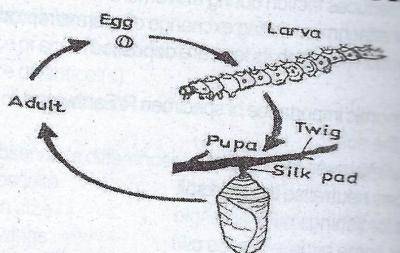The website has the complete lesson note for all the subjects in secondary school but this piece showcases the SS3 Animal Husbandry Lesson Note on Life Cycle of Some Endoparasites. You can use the website search button to filter out the subject of interest to you.
CLICK HERE to download the complete Document: DOWNLOAD HERE
SS 3: FIRST TERM
TOPIC: Parasites
CONTENTS: Endo-parasite
- Life cycle of tape worm
- Life cycle of liverfluke
SUB-TOPIC 1:
TAPE WORM–Taenia spp
Tape worm is a long endo-parasite flat worm. It has small head called scolex with suckers and hooks by which it holds fast to the intestinal wall of its primary host, man. It belongs to the group of worm called platy-helminthes. Pig is the secondary host for Taenia solium and cattle for Taenia saginata. Tapeworm has many segments called proglotides. It has narrow neck, the narrow end of proglotides is closer to the head and it is the youngest part. The head consists of rostellum, sucker and hooks. It has no mouth, alimentary canals, arms, respiratory and blood vessels. It is a hermaphrodite which excretes through the flame cells and ducts as in other flat worms.
Life cycle of tape worm
Mature proglotides with many fertilized eggs break off add pass out with faeces of the host (man). The eggs develop into embryo in the soil. This being taken up by the secondary host (pig) enters the blood stream to form a cyst. At this stage, it is called bladder worm. This later develops into a young worm in the primary host when eaten raw or under cooked pork.
Effects/Economic importance Tapeworm
- Anemia or blood shortage
- It causes hunger, abdominal pain or discomfort
- Indigestion and vomiting
- Emaciation or loss of weight
- Debility or general weakness
- Loss of meat at slaughter
- Loss of revenue and poor meat quality
Control of Tape worm
- Regular deworming of infected persons
- Prevent human feces in the pasture
- Pigs should not be allowed to eat human feces
- Proper cooking of meat before consumption
- Dogs and other carnivores should be kept away from the stock
- Meat must be examined for bladder worm at abattoir before selling to the public
SUB-TOPIC 2:
LIVER FLUKE–Fasciola hepatical
This is a short flat worm which attacks animals particularly cattle and sheep. It hides in the bile duct where it feeds and reproduces. Liver fluke can cause the death of an animal if not eliminated.
Life cycle of Liver fluke
The water snail is the secondary host of liver fluke while cattle, sheep, and goat are the primary hosts. Liver fluke eggs are laid in the bile duct of primary host. The eggs are then passed out with faeces. After about ten days, the eggs hatched in water into tiny ciliated larva called miracidia. The miracidia swim in water and attached to water snail and changed to sporocysts and undergo asexual reproduction and produce new larva called redia. The redia go to digestive system and develop into minute worms called cercaria. Cercaria could also form cysts on
Click on the Downloadable Button to get the FULL NOTE



